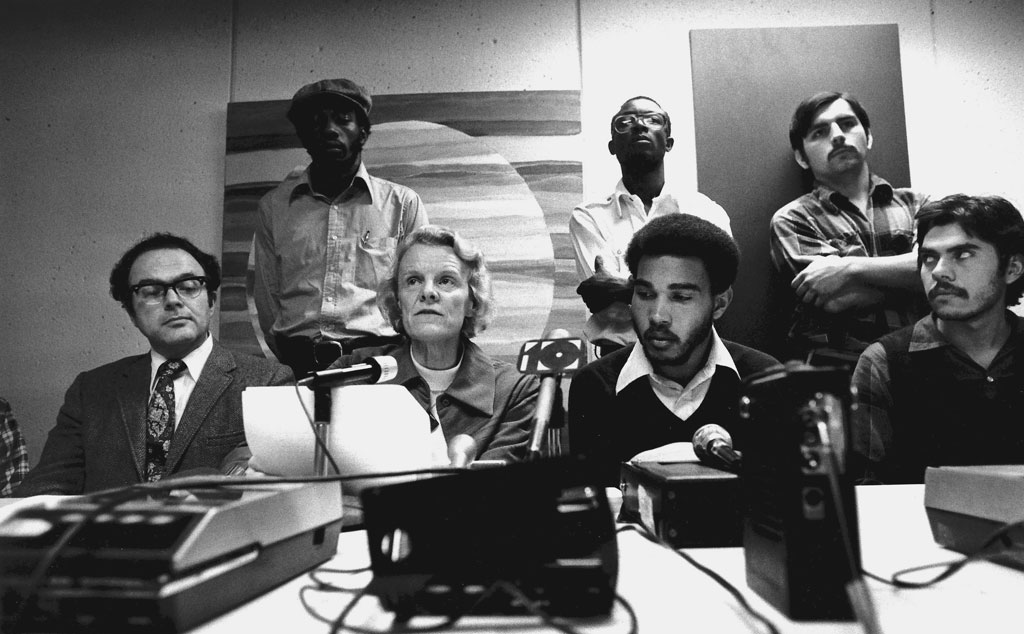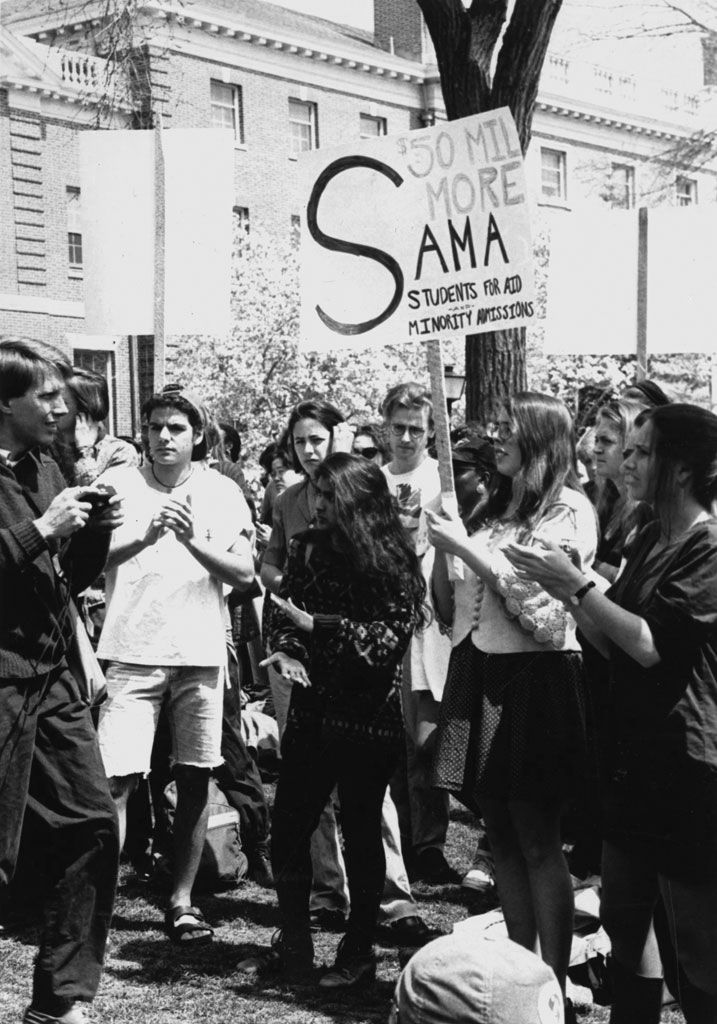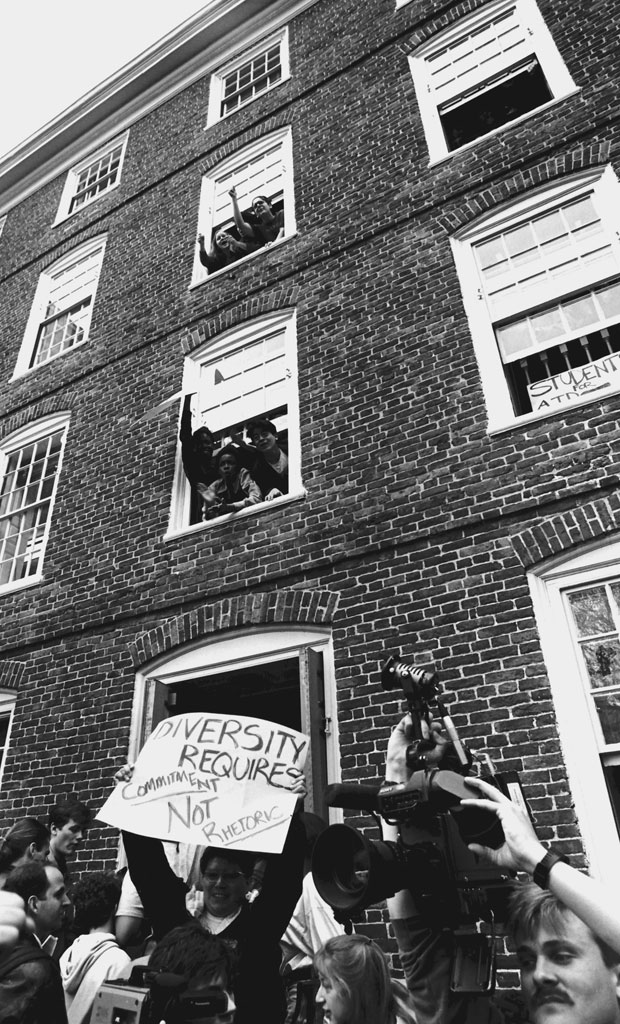
The 1992 University Hall Takeover was the largest in Brown’s history, but not the first. The first takeover in 1975 involved 40 students from the Third World Coalition (TWC), lasted 38 hours and was described as peaceful. The 1970s were lean times financially and the cutbacks to minority student and faculty recruitment directly affected the efforts promised as a result of the 1968 protest. The building occupation prompted negotiations, resulting in an agreement being reached with both sides expressing a positive outlook. With University Hall at center stage, issues related to inclusion and financial support would continue to be important to students at Brown moving forward.

On April 22, 1992, Students for Aid and Minority Admission (SAMA) led a student occupation of University Hall in hopes of pressuring Brown to move more rapidly towards the admission of students regardless of their ability to pay to attend. The students had three main demands from the administration at Brown. The first demand was to expand the then-current Capital Campaign goal by $50 million, to be used for undergraduate financial aid. The second demand was to open the Brown Corporation’s meeting on May 9, 1992 to all members of the Brown community with an open mic to discuss raising the $50 million goal. Additionally, the students demanded the meeting be kept open until the Corporation voted on the matter. The third and final demand was made by the students the afternoon of the protest in a meeting with the Vice President of University, where more than 100 students requested that no one be arrested by the University who participated in the takeover. Despite student demands, after repeated warnings, 253 students were arrested and charged with disorderly conduct for not vacating University Hall when asked to.
Over the summer before the academic year in which the protest occurred, Brown students compiled a 100-page document on how Brown could approach becoming need-blind. The paper was widely circulated and distributed to administrators. According to students who had participated in the need-blind movement, the college administration thought that the request was infeasible, in response to SAMA’s requests for the allocation of $50 million for undergraduate financial aid. Throughout the overall process of advocating for the need-blind policy, students felt ignored by the University and cited the University cancelling previously set-up meetings to overlooked representatives sent to the school board. However, what was perhaps the most significant instance was when students showed up to University Hall for a meeting, designed to be a democratic forum between President Gregorian and SAMA, to find that the president was in New York raising money and that the Provost was out of town. This lead to students deciding to sit in at University Hall.

The crowd of students collecting in University Hall grew to over 100 people. One notable leader in the University Hall takeover was Johanna Fernandez, class of 1993, who gave speeches in the dining hall, conducted teach-ins, and lead rallies on the Main Green. Around 12:30 pm, Fernandez gave a speech outside of the bathroom window of University Hall, drawing a crowd increasing in size. Unplanned, Libero Della Piana, a protester outside, started lifting students to Fernandez to join the students inside the building. Tommy Lee Woon, director of the Third World Center at the time, recalled that a student had slipped into University Hall, and students had mistakenly thought he had been thrown down, at which point hundreds of students stormed into the building, breaking down physical barriers. In a matter of minutes, more than 300 students occupied the building.
Obtaining a temporary restraining order from the Rhode Island Superior Court because University Hall was a state monument, the administration gave students the option to either vacate the building or remain and face arrest. Approximately 50 students left, including those like student Libero Della Piana, who had been chosen to be on the legal team before the protest started. The students were led out in pairs by administrators and were brought in buses to the Providence Police Station. All 253 students that were left in the building were charged with five criminal counts: disturbing a public assembly general, disorderly conduct, two counts of willful trespassing, and prevention from carrying on employment. The students went to court several times to dispute their charges, and ultimately had to pay a fine to the University. Need-blind admission would not be established at Brown until 2003 and was not fully practiced until 2007.
“An impressive display of Brown’s unity. Brown students want diversity and are willing to fight for it.”
—Adam Werbach ’95, Brown Daily Herald, 4/23/92
